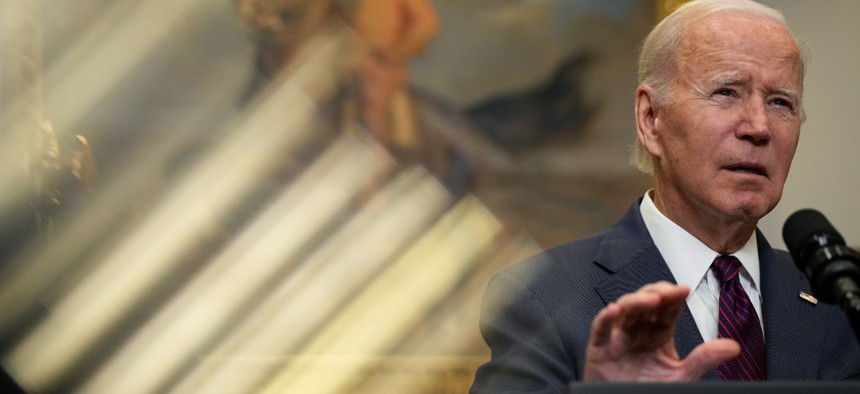Biden’s Management Agenda Turns One
Biden administration officials spoke on Tuesday about the progress made on the federal workforce, customer service and the business of government.
On Tuesday, Biden administration officials celebrated their progress over the last year to empower the federal workforce, enhance government customer service and harness the federal buying power to advance the president’s goals.
This event, held virtually, was focused on the president’s management agenda, which was initially issued in November 2021, then accompanied by a learning agenda and continuous updates on performance.gov. This is a multi-stage and multi-year strategy to increase citizens' trust and revamp how the federal government operates.
“Transformational change, which is our objective, takes time, but to get there you need to put some points on the board early and drive momentum and be clear about ultimately what success looks like,” Jason Miller, deputy director of management at the Office of Management and Budget, said at the event. “A year in we’ve made some great strides.”
He referred to the recent update on the agenda released on Nov. 30. It notes that, in September, the Office of Personnel Management held the first ever Chief Diversity Officer Council meeting, medicare.gov underwent a redesign and federal acquisition officials are looking to increase the number of new small business into the federal priority supply chain, among other things
Miller touted the “whole-of-government” initiative and said the administration is committed to be transparent about their progress and holding themselves accountable. Before the PMA blueprint was released, administration officials planned for the PMA to have fewer priorities than past ones to increase their probability of success as well as lead with values. Miller said that this was the first president’s management agenda ever to explicitly define its core values, which are equity, dignity, accountability and results.
OPM Director Kiran Ahuja noted at the event that she, along with other leads for the federal workforce priority, issued a memo late last month to agencies on establishing “success metrics."
This is to measure “employee engagement, mission critical hiring and staffing targets, hiring manager satisfaction with the hiring process…as well as our new OPM [Federal Employees Viewpoint Survey] focused on [diversity, equity, inclusion and accessibility],” she said.
Ahuja said this related to her work at OPM and to make the federal government a “model employer,” such as by focusing on DEIA, skills building and surge hiring to support implementation of the bipartisan infrastructure package.
In furtherance of the second priority area, customer experience, President Biden issued an executive order on this a year ago, which emphasizes the major life experiences when individuals have to interact with the government.
This priority “recognizes that every interaction between the government and the public is an opportunity” to deliver the value and competency that citizens expect and deserve, said Donald Remy, deputy secretary of Veterans Affairs, who is one of the priority area leads. While this is crucial to the VA’s mission, it’s also important for the rest of the federal government, added.
As outlined in the November update for the PMA, OMB and the General Services Administration announced over the summer that $100 million of the Technology Modernization Fund will go towards improving customer service within the federal government, in addition to the work of the 35 “federal high impact service providers” to “continue to make progress promoting ongoing accountability for federal service delivery.”
The final priority area is using the federal government’s buying power to “meet this administration’s goals and priorities for the nation,” such as on supporting American manufacturing, advancing equity and curbing climate change,” Cristin Dorgelo, OMB senior adviser for management, said on Tuesday. She noted the government awards at least $1.5 trillion dollars every year through federal contracts and awards.
For federal financial assistance alone, which the nation provides over $800 billion of, per year, with even more during emergencies, agencies are “still working to become an integrated enterprise organization,” despite some progress, Dale Bell, deputy assistant secretary in the Health of Human Service’s Office of Grants, stated. This could happen by coming together to agree on data standards or advising together on potential legislation or policies, noting that the “PMA commits to that type of leadership; that type of framework.”
Shortly after the president’s management was released last year, Don Kettl, former dean of the University of Maryland’s School of Public Policy and former professor at the LBJ School at the University of Texas at Austin, wrote in Government Executive that it was “a big deal.”
“The PMA creates a chain of accountability from the president to his political appointees, from the appointees to federal managers, and from them to federal employees and ultimately to citizens,” he wrote. “The combination of the direct link to citizens, coupled with the personal responsibility that the president’s appointees have agreed to own, marks a revolutionary turn in the PMA strategy.”








